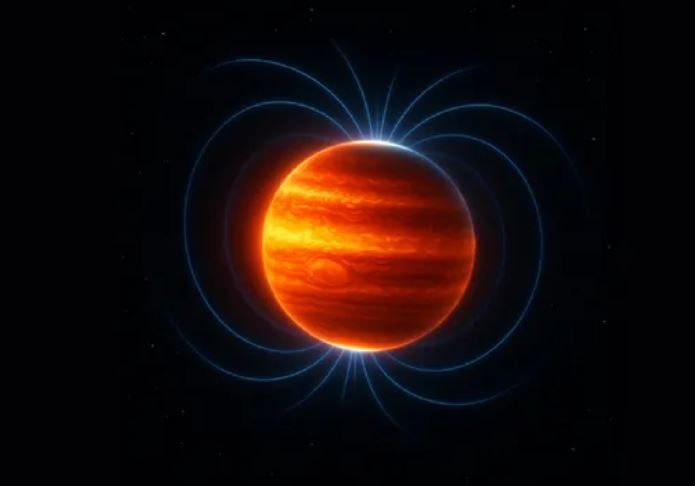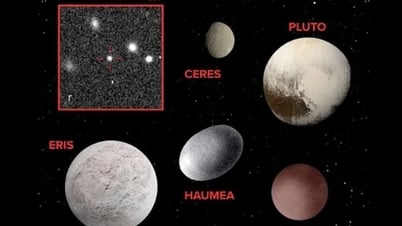Using the strange orbits of two of Jupiter’s many moons, Amalthea and Thebe, astronomers have reconstructed the early state of the gas giant. Around 4.5 billion years ago, when the cloud of gas and dust that formed the sun and the planets dissolved, Jupiter was at least twice as large as it is now and possessed a magnetic field about 50 times stronger than it is today, according to the team.
"It's amazing that even after 4.5 billion years, there are still enough clues left for us to reconstruct the physical state of Jupiter at the time it first formed," said astrophysicist Fred Adams of the University of Michigan, a co-author of the study.

Jupiter's radius was once twice its current size and the planet had a magnetic field 50 times stronger than it is today. Photo: K. Batygin
Research suggests that Jupiter's massive gravity, combined with the Sun's, played a key role in shaping the orbits of the planets and rocky bodies in the early solar system. However, the specific formation process of Jupiter remains a mystery.
To shed light on this, the scientists analyzed the current orbits of Amalthea and Thebe, which are slightly tilted and have been affected over time by the gravity of Io, a larger and volcanically active moon. By comparing the actual changes with those expected from Io’s impact, the researchers calculated that Jupiter would have had to have been between two and 2.5 times larger than it is today to create the current orbits of Amalthea and Thebe.
After the solar nebula dissipated and planet formation ended, Jupiter gradually contracted as its surface cooled. Based on its original radius, the team also estimated the planet’s magnetic field strength at that time to be around 21 millitesla – 50 times stronger than it is now and 400 times stronger than Earth’s magnetic field.
“What we have established here is a valuable benchmark,” said Konstantin Batygin, a planetary scientist at the California Institute of Technology (Caltech) and co-author of the study. “A point from which we can more confidently reconstruct the evolution of our solar system.”
According to Caltech, Jupiter is currently shrinking at a rate of about 2 centimeters per year. This is the result of the Kelvin-Helmholtz mechanism – a physical process that causes planets to become smaller as they cool. As the internal temperature drops, so does the internal pressure, causing Jupiter to steadily shrink. However, the exact time this process began is unknown.
Source: https://doanhnghiepvn.vn/cong-nghe/giat-minh-voi-qua-khu-cua-sao-moc-tung-khong-lo-gap-doi-nay-am-tham-thu-nho-moi-ngay/20250524022552509


![[Photo] Party and State leaders visit former President Tran Duc Luong](https://vphoto.vietnam.vn/thumb/1200x675/vietnam/resource/IMAGE/2025/5/24/960db9b19102400e8df68d5a6caadcf6)

![[Photo] Ho Chi Minh City holds funeral for former President Tran Duc Luong](https://vphoto.vietnam.vn/thumb/1200x675/vietnam/resource/IMAGE/2025/5/24/9c1858ebd3d04170b6cef2e6bcb2019e)


























































































Comment (0)